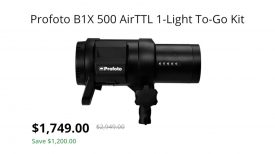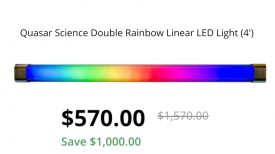
Photos by Matias Maxx
Before I picked up my first video camera I was a radio reporter for almost 15 years, and radio journalism attracted audio nerds like myself. When I began using cameras one of my biggest inspirations was DA Pennebaker, a prolific pioneer in cinema verité style of documentaries. When Pennebaker began filming in 1956, he found cameras and sound equipment too cumbersome for his handheld, observational style, and using his mechanical engineering background, he developed the first 16mm cameras with sync sound. His technological feat allowed for a completely new style of mobile, observational filmmaking, something we take for granted today. His most famous work, “Don’t Look Back”, provided a direct and intimate portrait of Bob Dylan and highlighted the potential of this new technology.
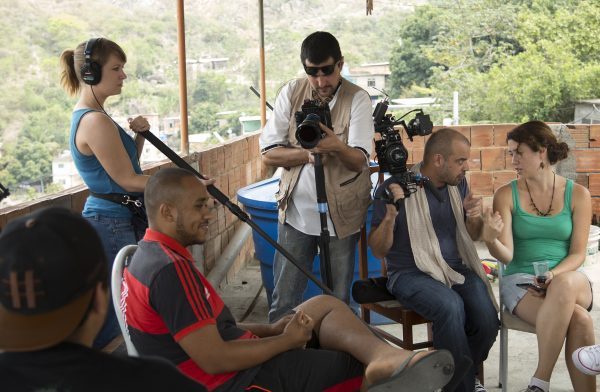
I am a fan of cinema verité and of the two person production crew – director as camera op, producer as sound engineer. (I usually hire b-camera locally, if needed.) This is how the early pioneers like DA Pennebaker rolled. They did it to kept a light footprint and to preserve the intimacy and mobility of the team.
Here I want to talk about gathering great sound for cinema verité filming, using my most recent documentary “A Bigger Brother” for Aljazeera’s Rebel Geeks, a seven-part series on hackers and digital democracy, as a case study.
The Project
The commissioning editor made it clear that the Rebel Geeks series would be unhosted and with no narration, and, as much as possible, cinema verité filming would make up the scenes. Interviews were allowed, but more to give context rather than have them be a central part of the film. “A Bigger Brother” is the story of collaboration between citizen journalists in Rio’s favelas and hackers in Brooklyn who are harnessing the power of metadata to more safely and thoroughly document police brutality.
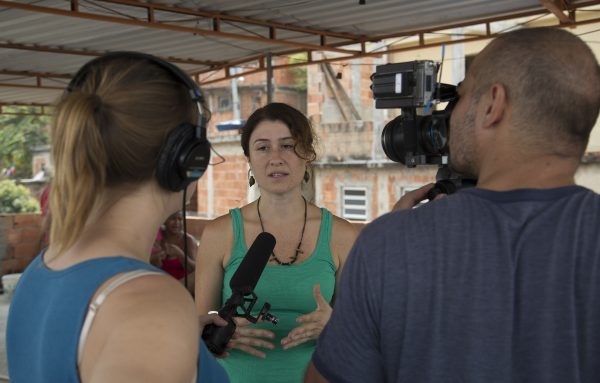
We shot mainly with the Canon C300. We also relied heavily on the Sony a7R II to film inside areas of the favela that were under the control of Comando Vermelho, the largest narco gang in Rio.
The Set Up
Verité and observational documentaries rely heavily on detail, not just in image but more importantly in sound. These types of films are constructed around dialogue, and as such I felt that dialogue should not go uncaptured. This is why I prefer to have a boom op when possible recording dual system sound. The audio engineer (in our case, the producer) can keep rolling even though the camera is switched off or filming something else, and she can keep the mic in optimal position where dialogue is happening. Dual sound gives everyone on the production a bit more freedom.
Producer/Sound: On this shoot, producer Lorien Olive was in charge of monitoring levels and recording the mix audio. The sound kit for the producer had to be light and compact. I went with the consumer Sony PCM-M10 recorder receiving a balanced line-level feed from the very compact Sound Devices Mix Pre-D field mixer, packed in a small audio bag I had someone make for me in Jakarta. The field mixer then received wireless signals from both the boom and the lav mics. The trick here is to keep all of the wireless receivers and transmitters on the same frequency block, for reasons I’ll explain below. Before every shoot, we sent reference tone to the Sony recorder peaking it at -12dB, then locking the levels on the recorder and using the field mixer to ride the levels. The Mix-Pre D’s LED audio level meters made for very accurate monitoring of audio gain levels, even in bright sunlight.
Director/Camera:
The producer’s mix audio is synched to the director’s camera using a wireless hop. Most wireless hops to camera are meant as scratch audio to be replaced later. But I wanted a redundant system that would allow me to use the wireless hop to my camera in case the producer’s mix audio failed for whatever reason. With verité filming it is almost never possible to repeat a scene so it gave me comfort that we had this redundancy.
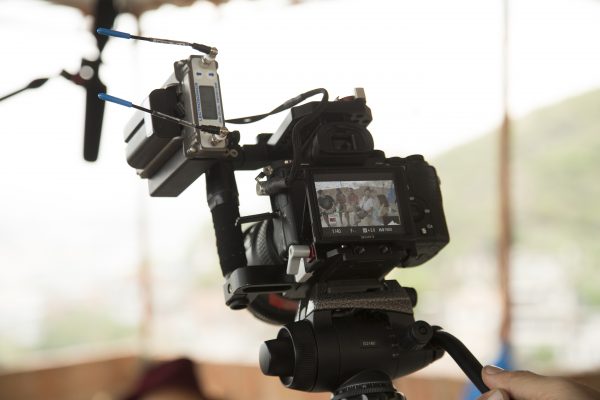
On this shoot we used the Lectrosonics SRb dual channel receiver on the main camera, with each channel tuned to the same frequencies as all the transmitters. This is why it is important to have everything on the same frequency block. The SRbs are more commonly used on ENG cameras, but they can be adapted for DSLRs and the C300 using the right cables and a Sony L-type battery adapter to power the receiver. The advantage of dual channel receivers is that they give you balanced outputs, i.e., the left and right channels aren’t summed to mono. You get split left and right tracks that you can mix or separate in post. This is helpful, say, when one of your wired characters has gone to the bathroom while you are recording a critical piece of dialogue with another character. The two sources don’t get mixed together on the wireless hop going into the camera. In other words, no flushing sounds over critical dialogue.
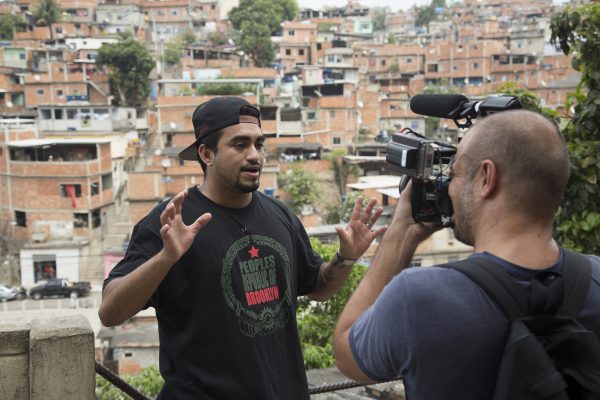
The Lectrosonics SRbs are very high performing receivers. We were filming in the densely packed favela called Complexo do Alemao, and reception was tricky due to the maze of cinderblock and brick houses. The SRb allowed me to visually tune to the most open frequencies and avoid the ones with the most radio interference.
Audio was synced up using Plural Eyes in Adobe Premiere Pro. This is normally a big task, but we typically prep the entire project at the end of every day during the shoot so that it is more or less ready when it comes to actual post. Because the mix audio gathered by the producer is identical to the wireless hop on the director’s camera, syncing was a breeze.
Having all that extra audio and dialogue proved to be very useful in building the story, and was particularly helpful when creating transitions from scene to scene.
This audio setup may not be for everyone, but for the kind of documentaries we do at Ilaya Films it is critical that we capture high fidelity dialogue. The best part of gathering great audio is that no one notices when you do it right. (Well, the audio engineers in charge of the final sound mix do. It makes their jobs easier when there are fewer audio issues.)
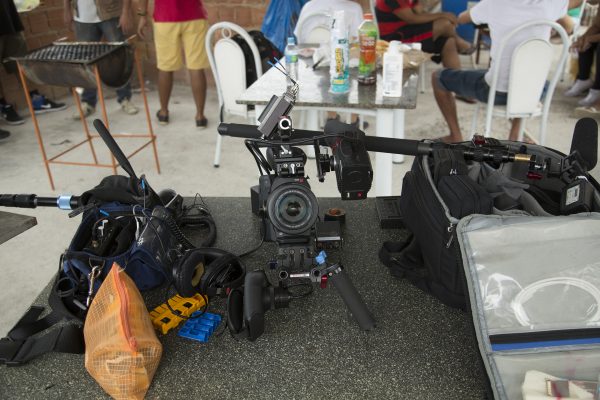
Here’s a complete list of the audio equipment used in our setup:
Sound Devices Mix Pre-D Compact Field Mixer
Sony PCM-M10 Audio Recorder
Lectrosonics 100 Series UHF Receiver (2)
Lectrosonics LM Transmitter
Lectrosonics HM Transmitter for our shotgun mic
Lectrosonics SRb Dual Channel Receiver
Tram TR-50 Lav Mics
Sanken CS-1 Short Shotgun Mic



-275x154.jpeg)
